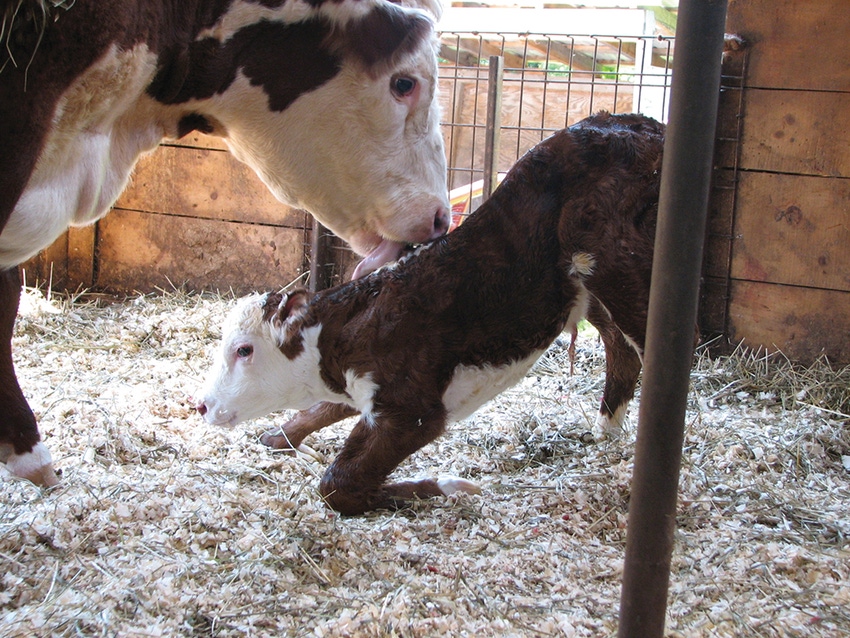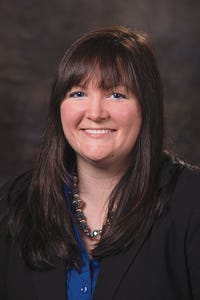BEEF Vet: Help ranchers plan their way out of trouble
There’s no single correct way to engage with consumers about topics important to them and the cattle business.
November 9, 2015

You get that dreaded 2 a.m. calving season phone call. As you head out to the ranch to assist with a birth, you (A) wonder what inspired you to pick a career that includes these middle-of-the-night emergencies; (B) briefly recall recent similar incidences and their outcomes; or (C) start thinking of how you can help this producer have fewer issues next year.
There’s no shame in an “all of the above” answer.
As you contemplate the ways to reduce incidences, you know it’s not just about inconvenience or calf survivability either.
“We know the obvious labor requirements that result from calving difficulty, but it also has an impact on calf health and cow health,” says Dan Moser, president of Angus Genetics Inc. and director of performance programs for the American Angus Association. “Calves that are born with difficulty are less likely to get as much colostrum, and the stress of that process can have an impact on their health down the line. Cows that experience calving difficulty don’t breed back as quickly.”
It’s not only a pain, it’s an economic issue.

Dan Moser, president of Angus Genetics Inc.
Successful calving seasons are part management, but there are also underused genetic tools that many farmers and ranchers could benefit from, if implemented, says Megan Rolf, extension beef cattle specialist at Oklahoma State University.
She’s talking about expected progeny differences (EPDs).
“A lot of breeds have direct calving ease and maternal calving ease,” Rolf notes. “The first is a really good selection tool for trying to prevent calving problems in your current season.”
Birth weight heavily influences calving ease direct (CED), but it also takes into account a calving score.
“The number that is probably not used as much as it should be is calving ease maternal [CEM], which reflects the potential calving ease of a sire’s daughter,” says Moser. “Calving ease maternal describes a bull’s daughters’ ability to calve unassisted, so if a producer is returning replacement females to the herd, they’d want to focus on both.”
Specific targets for either of the calving ease EPDs depend on the bull’s use (heifers versus cows) and what the breed makeup is of the herd they’re being bred to.

Megan Rolf, extension beef cattle specialist at Oklahoma State University
Among Angus sires, the current breed average for CED is +5 and CEM is +9, Moser says as an example, noting that a larger number is more favorable.
“The number relates to the percentage of unassisted births from heifers, so if we are comparing a bull that’s a 7 versus a 2, we’d expect 5 percentage points less difficulty out of the calves sired by the bull that’s a 7,” he says.
Looking at calving ease EPDs gives more information than selecting on birth weight alone, says Rolf.
“We know calving ease is a function of the pelvic area of the cows, birth weight of the calves, sometimes even the geometry of those calves,” she says.
Yet, when comparing bulls of different breeds, producers must go back to a birth weight EPD to make accurate comparisons in the form of across-breed EPD adjustments calculated annually by the Meat Animal Research Center in Clay Center, Neb.
Eighteen breeds are listed for birth weight, weaning weight, yearling weight, milk, marbling score, ribeye area and fat thickness. They are calculated back to an Angus base.
For example, comparing a Charolais bull that is a 1 for birth weight, with an adjustment factor of +8.8, would predict that sire’s calves to be the same weight as an Angus bull with a +9.8 birth weight EPD.
“It really puts in perspective the breed differences,” Moser says.
That may seem like a lot of calculating, especially when comparing two breeds that aren’t Angus, since they’ll both need to be adjusted to that base. Rolf says many universities offer free Excel-based tools where the math is as simple as punching in the numbers.
Breed loyal producers will get the most benefit from within breed rankings, she adds.
“For somebody that’s setting up a mating system, or considering making a change in breed, that’s where the across-breed factors really help them try to get an idea which of those breeds, or animals within those breeds, might fit their objectives the best,” Rolf says.
That’s why it’s important to have stated goals in the first place.
“Step number one: You need to figure out what you have and what you want. Then you can figure out how you’re going to get to what you want from what you have,” she says.
Calving and reproduction are only part of the equation, of course. When considering marketing methods and saleable end product, Rolf says dollar value ($V) indexes help producers simplify genetic decisions.
“Selection indexes really provide a fantastic and fairly simple way to select for multiple traits at once, and most of them are expressed in dollars of either profit or savings,” she says, noting that means the higher values are more favorable. “The bigger the number, the more you’re going to save or the more you’re going to earn.”
The most popular commercial indexes in the Angus breed are dollars weaning ($W) and dollars beef ($B), Moser says. Cattlemen who sell at weaning and keep replacement heifers often look at $W, “because it combines the revenue side of calf weaning weight and milk, but also the cow cost side with mature cow size,” he says.
Those who have a relationship with a feedlot or retain ownership of their calves to harvest may focus on $B.
“It’s a better predictor of profitability for them because it’s taking into account feedlot performance, rate of gain, feed efficiency and carcass merit,” Moser says.
Specific breed associations provide good resources and the National Beef Cattle Evaluation Consortium has a sire selection manual available that gives good, practical details, Moser says.
It might not be your job to create a problem-free herd, but if it means fewer midnight ranch runs, it may be one of the best returns on a daylight consultation you can get.
You might also like:
WHO backpedals on red meat/cancer link
65 photos that celebrate cowgirls & cattlewomen
5 tips for getting the most cash for your cull cows
3 steps to negotiating a great cow lease
15 favorite photos of hardworking American ranchers
You May Also Like



